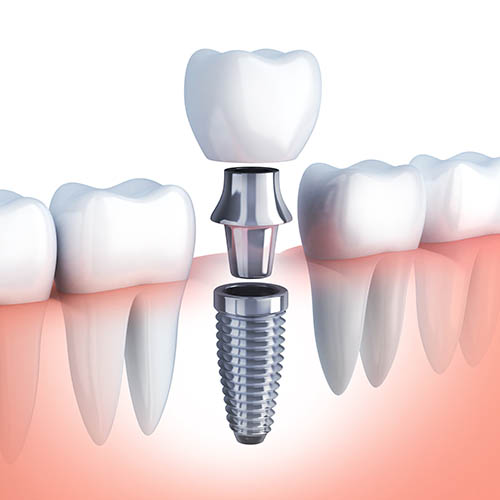
Single Tooth Implant In Dwarka
Nowadays, the best approach to replace a single missing (lost) tooth is with implant. By replacing your lost tooth with implant the conventional bridge approach which requires grinding of the adjacent teeth can be avoided. Hence your teeth are preserved in their natural form.
It is surgically placed in an opening that the dentist makes in the jawbone. After the implant integrates to your bone, it acts as a new root for the crown which will replace your missing tooth. A crown which is made to look like a natural tooth is attached to the implant and fills the space left in the mouth by the missing tooth.

Procedure of Single Tooth Implant
For Single Tooth Implant procedure to work there must be enough bone in the jaw. The bone has to be strong enough to hold and support the implant. If there is not enough bone, it might need to be added with a procedure called the bone grafting or bone augmentation. In addition, the natural teeth and the supporting tissues near where the implant is placed must be in good health.
A missing tooth in the anterior region is not only a physical loss, but also may be an emotional experience for the patient as well. Molars and pre-molars are usually the first teeth to be lost due to decay and gum disease. Designs of implant restorations have evolved to accommodate the width of the different teeth they can replace, not only wider anterior teeth but also posterior teeth.
As with all aspects of implant dentistry, the time and efficiency of replacing teeth makes it one of the most predictable dental procedures performed.

FAQ's
Unlike a bridge, which requires RCT and grinding down of neighboring teeth, an Implant is inserted into the bone and takes direct support from it like a natural tooth.
Anchoring the implant into the bone produces mechanical changes which help in more bone formation.
Titanium is the material of choice for implants. It is biocompatible and very well tolerated as well as safe for the body.
Smoking delays the healing of tissues after implant placement and is hence discouraged after the procedure.
Surgical procedures usually do not have a success rate of 100% but the failure rate is very low. Depending on the surgeon’s expertise and good patient selection, failure usually does not occur.
The procedure is done under local anesthesia and is hence not painful. After the procedure, the patient takes painkillers for a few days which keep him comfortable post operatively too.





















